Doctrine and devotion. Practices and experiences. Doing and being. Mystery and Identity. Seeing and knowing. How do doctrine, images, story, and identity all come together in the journey of Mary?
After reading Benedict XVI’s Chapter 4, “Hail Full of Grace: Elements of Marian Piety According to the Bible,” in Mary: The Church at the Source I saw more clearly that we are called to know Mary in our hearts, not just our heads. Whether we are already familiar with Marian doctrine and piety, or this entire topic is new to us, many people are curious about Mary. They are drawn to her image and her life story. Much of the history of Marian piety undoubtedly has a deep mystical element—personal revelations, pilgrimage sites, a profound sense of need for a mothering, nurturing figure.
In previous chapters of Benedict XVI’s book he characterizes an activist view of the church as masculine and a feminine view of the church as a home.
The verbs associated with Mary like listen and ponder convey deep, slow, intuitive movement.
Nouns associated with Mary like seed and soil also point to depth, humility and patience. Caryl Houselander writes that Mary is like fugue—a musical term for repetition, interweaving, and bringing together.

By Marcos Amigo – Own work, CC BY-SA 4.0, https://commons.wikimedia.org/w/index.php?curid=125056530
Mary is a woman of prayer, a woman who knows what it is to pray. She’s a model of prayer, and a prophet, a visionary… but a prophet and visionary who can be in the dark and have faith, not a visionary who flees from this life’s troubles.
Mary of the miracles.
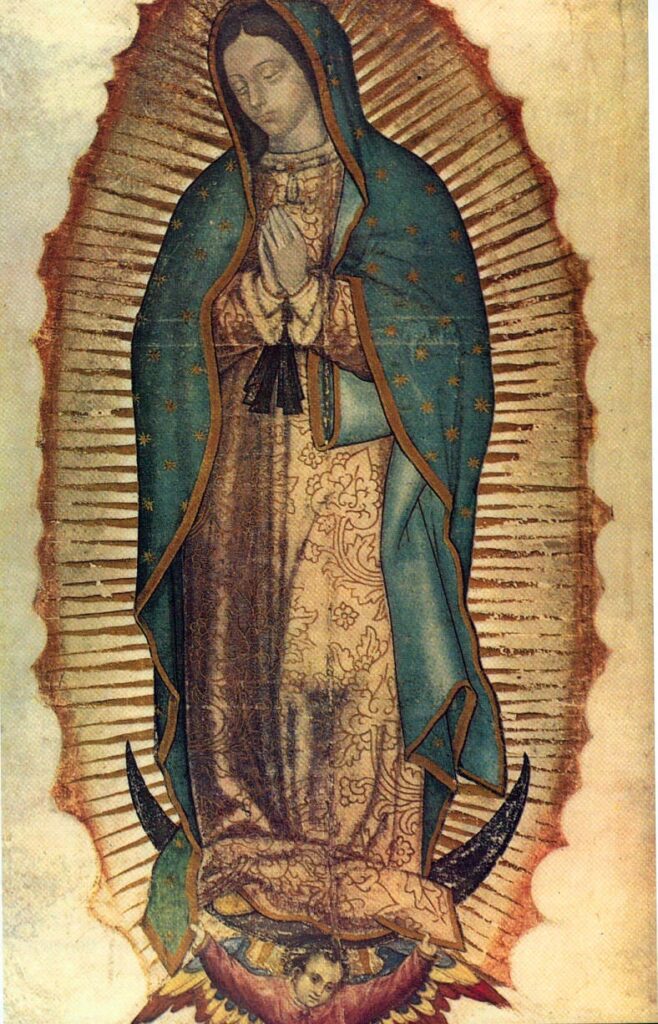
Mary of the sorrows.
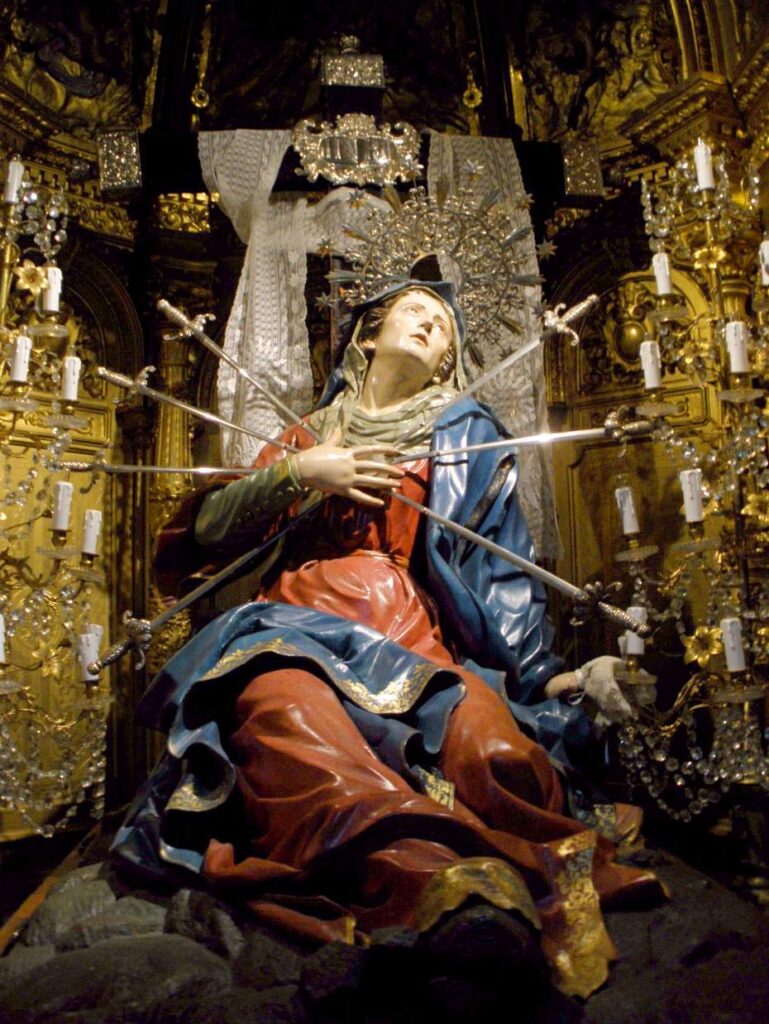
Mary at the Cross.
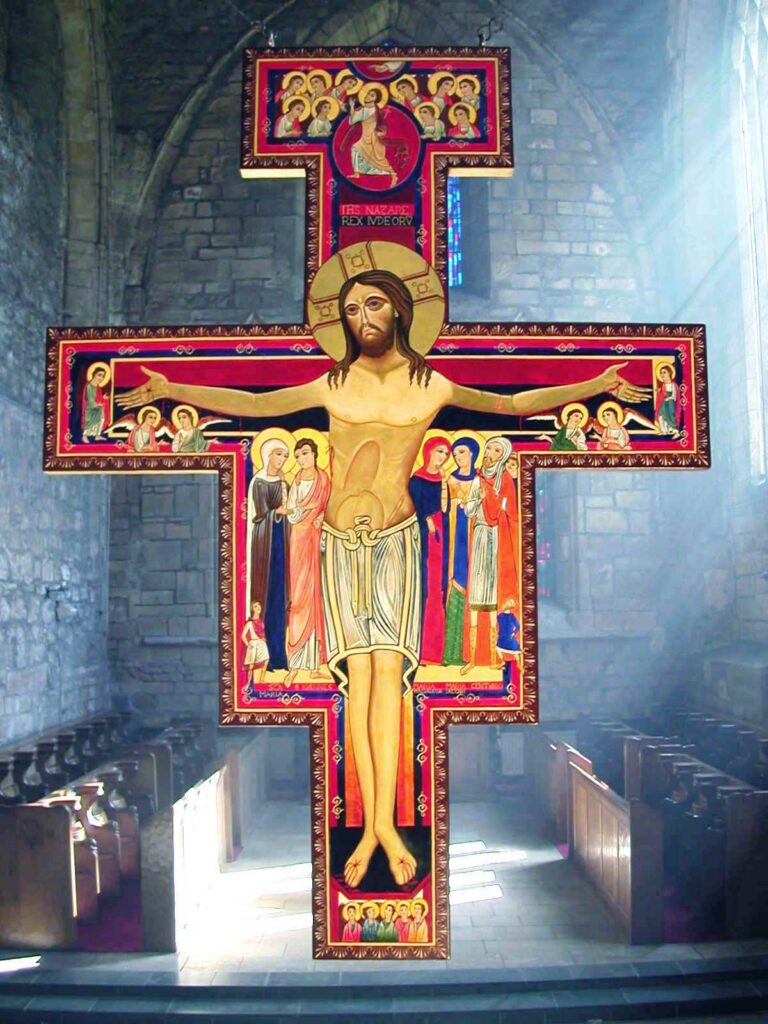
Mary slaying demons.
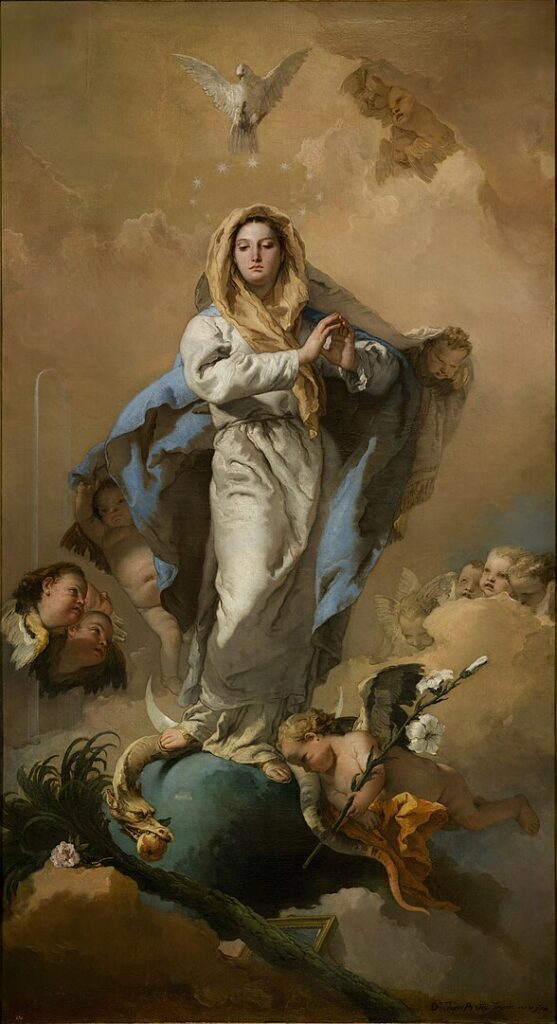
Mary encapsulates the paradoxical meanings of Christianity: the divine became human; matter can be made hold; suffering can free us; darkness contains light.
Studying Mary isn’t enough. We are called to know her, and through knowing her, to know her son, and therefore to know ourselves as God made us to be. How do we come to know Mary? One way is through prayer.
But studying Mary also has helped me to know her. As with any of the saints, Mary can seem distant, perfect, so close to God, so special to God. I can’t have that kind of intimacy with God, I often tell myself. Let me just use my head to learn the teachings of the church; let me just submit my body to the practices of the church and I’ll find peace and happiness.
But knowing Mary is more than doing something. Somehow knowing Mary, pondering her, makes me want to be more like her—patient, listening, serving, forgiving.
Knowing Mary reminds me that the church is a body of people, a communion. Pondering Mary’s faith reminds me that God is a Trinity, three divine persons, who communicates love.
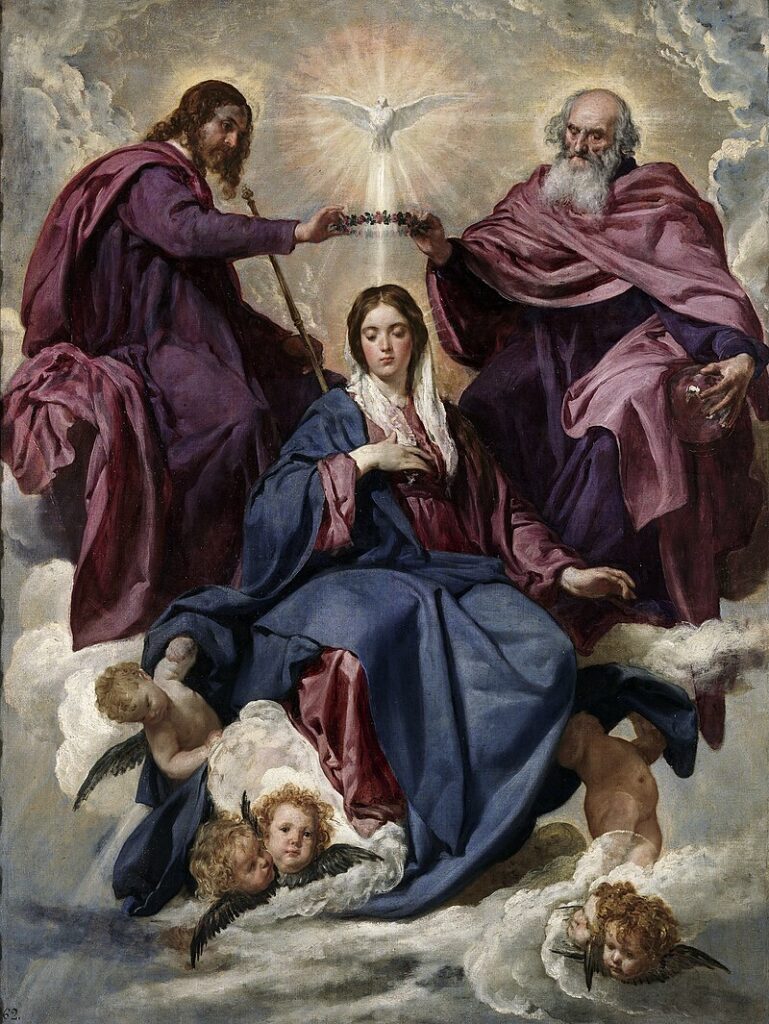
In chapter 4, Benedict XVI writes that Mary stretches forth wholly to God… she is a lover “who has the breadth and magnanimity of true love, but who also has its unerring powers of discernment and its readiness to suffer.”
Benedict XVI also calls Mary a prophetess. She was afraid at the Annunciation but she ponders things; “she carries out an inner dialogue with the Word that has been given to her; she speaks to it and let it speak to her, in order to fathom its meaning.”
At the Annunciation, “Mary welcomes the Holy Spirit into herself. Having become pure hearing, she receives the word so totally that it becomes flesh in her. This understanding of hearing, meditation, and conception appears in conjunction with the concept and the reality of prophecy: inasmuch as Mary hears in the very depths of her heart, so that she truly interiorizes the Word and can give it to the world in a new way, she is a prophetess.”
Mary is a mystic. She hears the word of God and lets it draw her towards the interior essence. If we let her, she will help us to be a mystic too, someone open to mystery, someone with the courage to pray, even if apparently nothing happens.
“Rejoice, Oh favored one, the Lord is with you!” the Angel says to Mary (Lk 1:28). The more I’m like Mary the more I can rejoice.
Benedict XVI challenges us that we need humility to see the mystery of God and patience to accept the word. He critiques those who demand that any statement from God be as clear as a banal statement as wrong. Mary is the woman who knows how to read signs:
“Mary sees the events as “words”, as happenings full of meaning because they come from God’s meaning-created will. She translates the events into words and penetrates them, bringing them into her heart—into that interior dimension of understanding where sense and spirit, reason and feeling, interior and exterior perception interpenetrate circumincessively. She is thus able to see the totality without getting lost in individual details and understand the points of the whole. Mary ‘puts together’, ‘holds together’—she fits the single details of the whole picture, compares and considers them, and then preserves them. The word becomes seed in good soil. She does not snatch at it, hold it locked in an immediate superficial grasp, and then forget it. Rather, the outward event finds in her heart a space to abide and, in this way, gradually to unveil its depth, without blurring any of its once-only contours.”
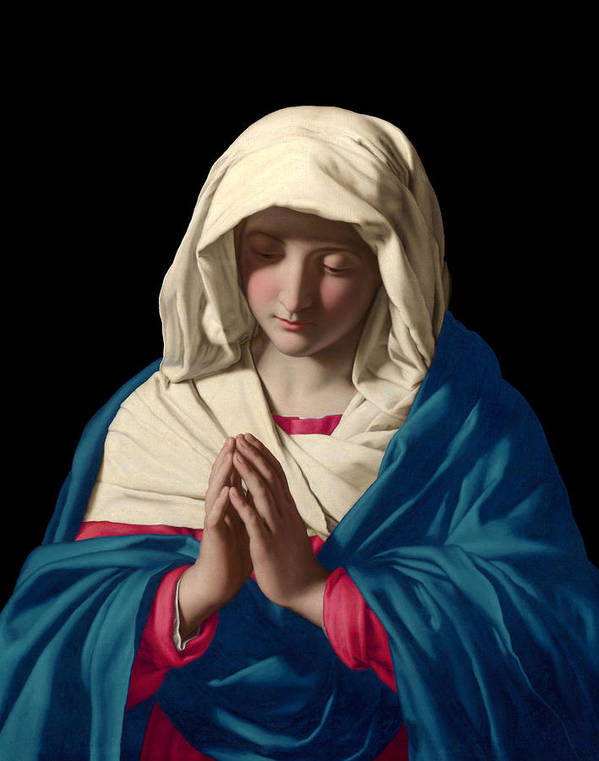
Mary is a model and prophet. But her highest title is still the Mother of God because as a mother she knows we need her patient love to imitate her; like a Mother she loves us not only when we were knit in our mother’s womb but when, like a fugue, we move towards God, becoming more wound up with her and the body of Christ.
From the Margarita Mooney | Margarita Mooney Clayton | Mary series
View more Posts